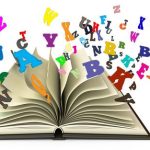15 Clever Anchor Charts for Teaching Story Elements
Anchor charts are a valuable tool in the classroom for teaching various concepts, including story elements. These visual aids not only help students understand the different elements of a story but also serve as a reference point throughout their learning journey. In this article, we will explore 15 clever anchor chart ideas that can be used to teach story elements effectively.
1. Character Traits Chart: Create a chart that lists different character traits on one side and examples from various stories on the other side. This will help students identify and analyze the traits of different characters.
2. Plot Structure Chart: Display the different components of a story’s plot structure, such as exposition, rising action, climax, falling action, and resolution. Provide examples of each element from popular books or films.
3. Setting Sensory Chart: Help students visualize the settings in stories by creating a chart that engages their senses. Include sections for describing what the setting looks like, sounds like, smells like, and feels like.
4. Conflict Types Chart: Show students the different types of conflicts that can occur in a story, including person vs. person, person vs. self, person vs. nature, and person vs. society. Use examples from popular literature to illustrate each type.
5. Point of View Chart: Explain the different perspectives from which a story can be told, such as first-person, second-person, and third-person. Provide examples of each narrative technique.
6. Theme Chart: Help students identify the themes present in different stories by creating a theme chart. Include common themes like love, courage, friendship, and perseverance, along with relevant examples.
7. Character Development Chart: Display the different ways in which characters can change and develop throughout a story. Include sections for showing how they start, what challenges they face, and how they grow or change.
8. Figurative Language Chart: Introduce various forms of figurative language, such as similes, metaphors, personification, and hyperbole. Include examples of each type along with their definitions.
9. Symbolism Chart: Teach students to recognize symbolism in stories by creating a chart that demonstrates common symbols and their meanings. Use examples from literature to bring the concept to life.
10. Beginning, Middle, End Chart: Break down a story into its essential components by dividing the chart into three sections: beginning, middle, and end. Provide space for students to write or draw key events in each part.
11. Cause and Effect Chart: Illustrate the cause and effect relationship in stories by creating a chart that connects actions with their outcomes. Use arrows or lines to show the causal relationships clearly.
12. Dialogue Chart: Highlight the importance of dialogue in storytelling by creating a chart that shows different ways to incorporate dialogue in narratives. Include examples of dialogue from well-known books or movies.
13. Tone and Mood Chart: Help students understand the tone and mood of a story by creating a chart that demonstrates different emotions and states of mind. Use descriptive language and imagery to convey the intended tone and mood.
14. Foreshadowing Chart: Teach students to identify and interpret foreshadowing by creating a chart that lists instances of foreshadowing in various stories. Discuss how these subtle hints provide clues about future events.
15. Comparing Story Elements Chart: Create a chart that allows students to compare story elements across different texts. Include sections for characters, setting, plot, theme, and any other relevant elements.
In conclusion, anchor charts can be a powerful tool for teaching story elements. By implementing these 15 clever ideas, educators can create engaging and interactive visuals that support students’ understanding of key concepts. Remember to adapt these anchor chart ideas to suit your students’ age and learning needs, and let creativity guide your chart-making process.


